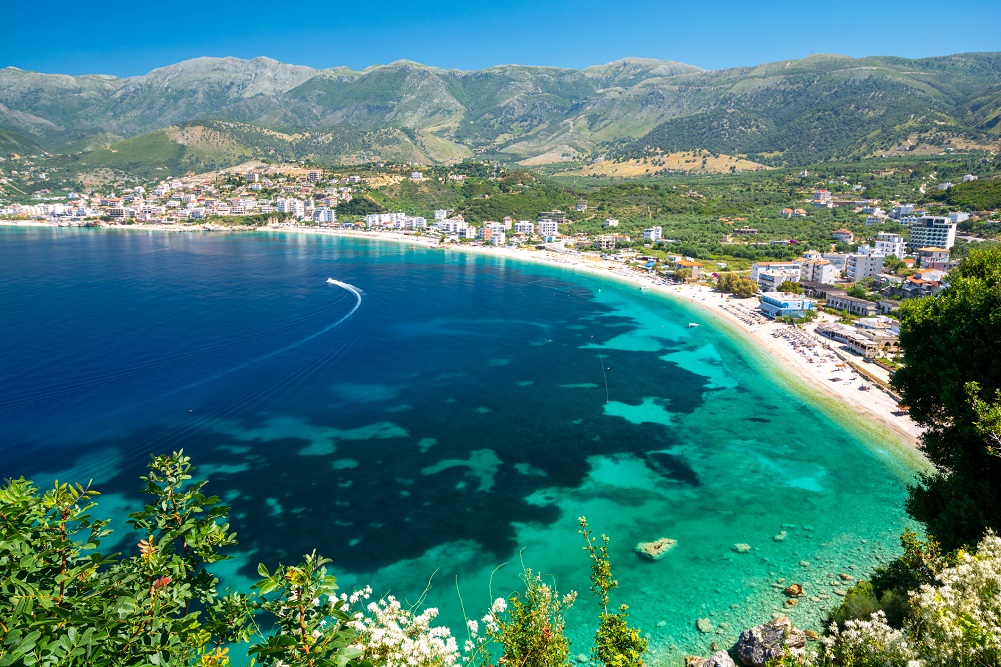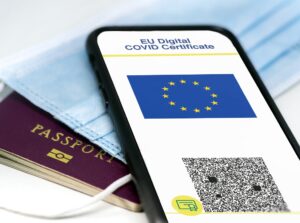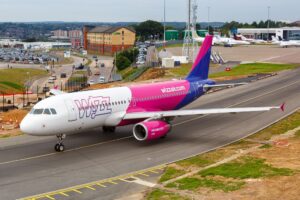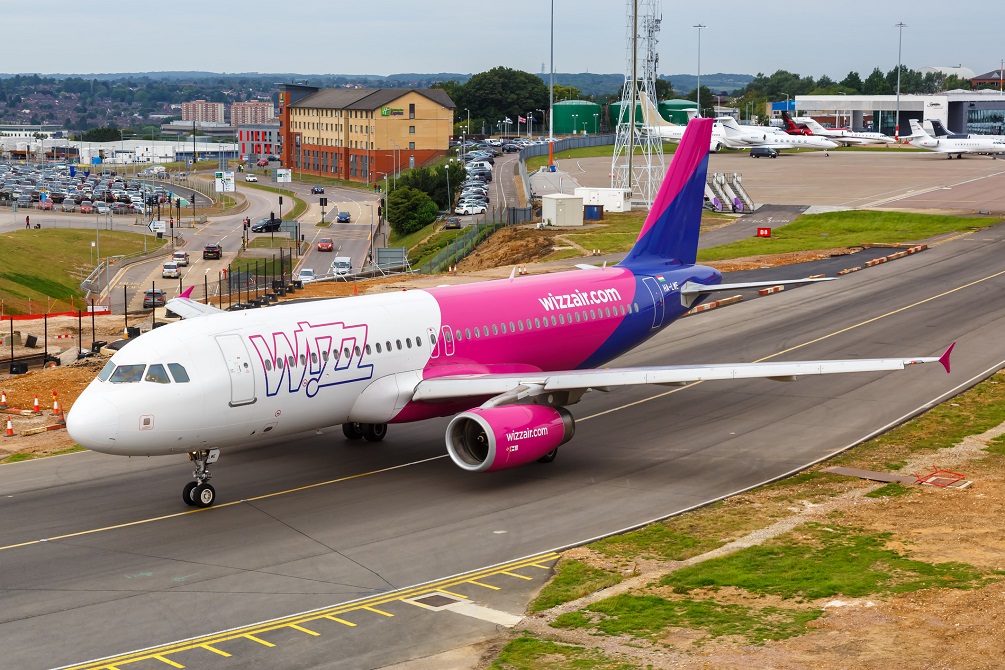Albania
Endless rolling hills blanketed by dense woodland, ancient castles, and towering mountains give Albania a charm one cannot miss.
Located on the Balkan Peninsula in South-eastern Europe, Albania is a small country with many castles, forested rolling hills, and archaeological sites.
Mountains dominate Albania’s terrain, and hills run in different directions from east to west. There are many stunning lakes, rivers, and beach sides in the country ideal for sunbathing and water activities.
Albania’s capital, Tirana, is one of the country’s cultural centers and most populated cities. It’s among the sunniest and wettest cities in Europe.
The weather is always ideal in Albania, as the Mediterranean climate allows for cool, dry summers and mild, rainy winters.
Albania has a cuisine characteristic of Mediterranean countries. For an authentic tour of Albanian cuisine, it’s best to visit during July, August, or September.
Albania has one of the youngest populations on the continent, with about one-fifth under 15 years of age.
The country was the home of Mother Teresa. Most of the residents are Muslim.



Albania is neighboured by Montenegro to the northwest, Kosovo to the northeast, Greece to the southeast, and Macedonia to the east. The Adriatic and Ionian seas lie to the west and southwest; Italy lies beyond the Adriatic.
Most of Albania’s landscape is mountainous and hilly. The North Albanian Alps, which is an extension of the Dinaric Alps, covers the northern regions of Albania.
Dense forests dominate the Albanian Alps. The highest peak found here is Mount Korab (2,753 m) on the Albanian-Macedonian border.
The mountains in the southern parts of the country aren’t as heavily forested as those of the Alps. They are bare and covered with Mediterranean shrubs, oaks, and pines.
Albania’s coastline extends for about 450 km (280 mi) along the Adriatic, which runs south from the Montenegrin border to the Bay of Vlora, where the Ionian Sea begins.
The Ionian coastline features a narrow coastal strip characterized by rocky coves and steep cliffs extending directly from the water. There are several caves along the base of these cliffs.
The Adriatic coast is low-lying, with fertile alluvial plains that formed from several rivers flowing into the sea. These plains contain wetlands that are a hotspot for many species of migratory birds and waterfowl.
The Adriatic coast also has large protected bays, such as Vlora and Durrës.
There are several lakes and rivers in Albania.
The most notable lakes are Lake Shkodra (Skadar) in the north, Lake Ohrid in the southeast, and Lake Prespa along the eastern border, the latter two of which are between two and four million years old.
The longest river in the country is the Drin (roughly 175 miles [280 km]).
There are also many waterfalls in Albania, namely Grunas in Theth, in the Albanian Alps, Kokotraf in Konispol, and Progonat in Kurvelesh.



There are major contrasts in Albania’s weather from one region to another because the country has a Mediterranean and continental climate.
When travelling from the north to the south, it’s likely that you’ll experience changes in the temperature, humidity, and rainfall.
The warmest parts of the country are those along the Adriatic and Ionian seas. Temperatures are more moderate there than the rest of the country. The eastern and northern highlands are the coldest areas in Albania.
Along the coast, summers are warm and dry and winters are mild and wet. The alpine regions have temperate summers and cold, snowy winters.
In the winter, which starts in late December and ends in late March, the average monthly temperature is 1 °C (30 °F). Summer is from late June to late September and the average monthly temperature is 21.8 °C (71.2 °F).
Summer is the best time to visit Albania for a beach vacation. Bear in mind that July is, on average, the hottest month in Albania.
Rainfall is plenty in Albania, but the northern regions receive more rain than the south.
Precipitation varies from 100 inches (2,500 mm) in the North Albanian Alps to 30 inches (760 mm) along the eastern border. Most of the rainfall occurs during winter.
There’s an abundance of sunshine in the country, allowing for pleasant summers filled with outdoor activities.



Location, tradition, and climate play a significant role in Albanian cuisine.
Therefore, each region of the country boasts its own unique dishes. Cooking styles also differ from the north to the south.
Albanian meals rely heavily on the variety of fruits grown in the country, such as lemons, figs, and olives. They use various vegetables, spices, and herbs, like potatoes, legumes, peppers, basil, lavender, and thyme.
Since the country lies along the Adriatic, fish, and seafood are staples of the Albanian diet. Lamb is the most commonly prepared meat, but poultry, beef, and pork are also eaten.
The national dishes of Albania are Tavë kosi, a dish made of lamb, rice, and yogurt, and Fërgesë, consisting of cottage cheese, tomatoes, and peppers.
A popular pastry you should try is Pite, which is made of spinach and curd or minced meat. And a common dessert is oshaf, a pudding made of sheep’s milk and figs.
Some popular snacks include Petulla (traditional fried dough served with powdered sugar or feta cheese and fruit jam), Flia (a crepe-like dessert served with sour cream), and Krofne (doughnuts filled with jam or chocolate).
Raki is a traditional Albanian drink made from grapes. The brandy is often taken before a meal. Coffee is also significant to Albanian culture.



In Albania, you can wear any garments and clothes you choose, including shorts, depending on the season and time of year you visit.
Albania’s climate can vary from extremely hot to freezing cold, so dressing in layers is best.
If you’re visiting in the summer, it’s easier to determine what to pack. Bring along regular summer attire along with a sweater, jacket or wrap for cool nights and trips to the mountains.
Smart, casual clothing is necessary for a night out or a dinner at one of the local restaurants.
When visiting religious buildings, ensure your shoulders and knees are covered.



The Albanian lek (ALL) is the means of payment in Albania. It’s a closed currency, meaning it’s only circulated within the country.
Banknotes are in denominations of 100, 200, 500, 1000, 2000, and 5000 lekë and coins in 1 lek and 5, 10, 20, 50, and 100 lekë.
Since lek is not available outside of Albania, carry pounds and exchange them for the local currency once you arrive.
You can exchange money at any currency exchange agency in Albania. Avoid banks and airport exchange offices because you may not get the most favorable rates. It’s best to exchange small amounts of the currency at a time.
Although euros are accepted at most hotels, travel agencies, and airport shuttles, some local places like beach shops, castles and museums only accept lek.
Before you leave Albania, ensure you either spend your remaining lek or exchange it for your home’s currency.
You can use your credit card at ATMs, high-end restaurants, and international shops but the charges may be high. For every 100 euro you withdraw, you might pay 4 to 5 euros, so it’s best to pay in cash.



The official language of the country is Albanian, which has two main dialects: Gheg and Tosk.
Gheg is spoken to the north of the Shkumbin River, while Tosk is the main dialect of residents in the southern regions.
Albanian contains words from Persian, Turkish, Greek, and Latin. It’s also spoken in Northern Macedonia, Kosovo, Italy, and Greece.
The second most spoken language in Albania is Greek.
Other languages spoken by minority groups in Albania include Serbian, Bosnian, Bulgarian, and Macedonian. In the Pustec Province in East Albania, the official language is Macedonian.
Although some Albanians speak English, especially the younger ones, it’s a good idea to learn the local language. Here are some basic Albanian words and phrases to get you started:
- Hello – Përshëndetje or Tungjatjeta
- Good morning – Mirëmëngjes
- Good day – Mirëdita
- Good evening – Mirëmbrëma
- Good night – Natën e mirë
- Bye – Mirupafshim
- Yes – Po
- No – Jo
- Sorry – Më fal
- Excuse me – Më falni
- Thank you – Faleminderit
- You’re welcome – Ju lutem
- How much is it? – Sa kushton?
- Where? – Ku?



Folklore and religious and pagan holidays are significant to Albanian culture.
Throughout the year, you can attend agricultural fairs and religious festivals, which often involve contests in the national stadium in Tirana. Folkloric festivals also occur in towns across the country; the largest is the National Festival of Folklore in Gjirokastër.
Albanians celebrate spring day, or Dita e Verës, in Mid-March in Elbasan.
Albania has a homogenous population. Greeks are the largest minority group, occupying the southern parts of the country in the districts of Dropull, Pogon, and Vurg.
There are four official religious groups in the country: Sunni Muslim, Bektashi Muslim, Catholic Christian, and Orthodox Christian.
Followers of Islam dominate the central regions of Albania, while Roman Catholics have settled primarily in the north in Shkodër and Orthodox Christians in the southern provinces of Gjirokastër, Korçë, Berat, and Vlorë.
Besides the official religions, there are also followers of Baha’is, Christian Evangelicals, Jehovah’s Witnesses, atheists, and non-religious people in Albania.
Mother Teresa, a Roman Catholic nun, and missionary who was of ethnic Albanian descent, is a national hero in Albania. Her work is commemorated in various ways throughout the country.
Albanian folk music is an important part of the national identity. And football is the most popular sport in the country.



British passport holders don’t need a visa for stays of up to 90 days in any 180-day period. If you want to stay longer in Albania, you’ll need to apply for a residence permit at a local police station.
Your passport should be valid for three months from the date you plan to enter Albania.



There are two types of plugs used in Albania: Type C (flat with two round pins) and Type F (round with two circular pins and two earth clips).
Sockets supply a standard voltage of 230 V and a standard frequency of 50 Hz.
It’s best to bring a transformer for devices and appliances with a low voltage. And a universal adapter with surge protection.



Located on the Balkan Peninsula in South-eastern Europe, Albania is a small country with many castles, forested rolling hills, and archaeological sites.
Mountains dominate Albania’s terrain, and hills run in different directions from east to west. There are many stunning lakes, rivers, and beach sides in the country ideal for sunbathing and water activities.
Albania’s capital, Tirana, is one of the country’s cultural centers and most populated cities. It’s among the sunniest and wettest cities in Europe.
The weather is always ideal in Albania, as the Mediterranean climate allows for cool, dry summers and mild, rainy winters.
Albania has a cuisine characteristic of Mediterranean countries. For an authentic tour of Albanian cuisine, it’s best to visit during July, August, or September.
Albania has one of the youngest populations on the continent, with about one-fifth under 15 years of age.
The country was the home of Mother Teresa. Most of the residents are Muslim.



Albania is neighboured by Montenegro to the northwest, Kosovo to the northeast, Greece to the southeast, and Macedonia to the east. The Adriatic and Ionian seas lie to the west and southwest; Italy lies beyond the Adriatic.
Most of Albania’s landscape is mountainous and hilly. The North Albanian Alps, which is an extension of the Dinaric Alps, covers the northern regions of Albania.
Dense forests dominate the Albanian Alps. The highest peak found here is Mount Korab (2,753 m) on the Albanian-Macedonian border.
The mountains in the southern parts of the country aren’t as heavily forested as those of the Alps. They are bare and covered with Mediterranean shrubs, oaks, and pines.
Albania’s coastline extends for about 450 km (280 mi) along the Adriatic, which runs south from the Montenegrin border to the Bay of Vlora, where the Ionian Sea begins.
The Ionian coastline features a narrow coastal strip characterized by rocky coves and steep cliffs extending directly from the water. There are several caves along the base of these cliffs.
The Adriatic coast is low-lying, with fertile alluvial plains that formed from several rivers flowing into the sea. These plains contain wetlands that are a hotspot for many species of migratory birds and waterfowl.
The Adriatic coast also has large protected bays, such as Vlora and Durrës.
There are several lakes and rivers in Albania.
The most notable lakes are Lake Shkodra (Skadar) in the north, Lake Ohrid in the southeast, and Lake Prespa along the eastern border, the latter two of which are between two and four million years old.
The longest river in the country is the Drin (roughly 175 miles [280 km]).
There are also many waterfalls in Albania, namely Grunas in Theth, in the Albanian Alps, Kokotraf in Konispol, and Progonat in Kurvelesh.



There are major contrasts in Albania’s weather from one region to another because the country has a Mediterranean and continental climate.
When travelling from the north to the south, it’s likely that you’ll experience changes in the temperature, humidity, and rainfall.
The warmest parts of the country are those along the Adriatic and Ionian seas. Temperatures are more moderate there than the rest of the country. The eastern and northern highlands are the coldest areas in Albania.
Along the coast, summers are warm and dry and winters are mild and wet. The alpine regions have temperate summers and cold, snowy winters.
In the winter, which starts in late December and ends in late March, the average monthly temperature is 1 °C (30 °F). Summer is from late June to late September and the average monthly temperature is 21.8 °C (71.2 °F).
Summer is the best time to visit Albania for a beach vacation. Bear in mind that July is, on average, the hottest month in Albania.
Rainfall is plenty in Albania, but the northern regions receive more rain than the south.
Precipitation varies from 100 inches (2,500 mm) in the North Albanian Alps to 30 inches (760 mm) along the eastern border. Most of the rainfall occurs during winter.
There’s an abundance of sunshine in the country, allowing for pleasant summers filled with outdoor activities.



Location, tradition, and climate play a significant role in Albanian cuisine.
Therefore, each region of the country boasts its own unique dishes. Cooking styles also differ from the north to the south.
Albanian meals rely heavily on the variety of fruits grown in the country, such as lemons, figs, and olives. They use various vegetables, spices, and herbs, like potatoes, legumes, peppers, basil, lavender, and thyme.
Since the country lies along the Adriatic, fish, and seafood are staples of the Albanian diet. Lamb is the most commonly prepared meat, but poultry, beef, and pork are also eaten.
The national dishes of Albania are Tavë kosi, a dish made of lamb, rice, and yogurt, and Fërgesë, consisting of cottage cheese, tomatoes, and peppers.
A popular pastry you should try is Pite, which is made of spinach and curd or minced meat. And a common dessert is oshaf, a pudding made of sheep’s milk and figs.
Some popular snacks include Petulla (traditional fried dough served with powdered sugar or feta cheese and fruit jam), Flia (a crepe-like dessert served with sour cream), and Krofne (doughnuts filled with jam or chocolate).
Raki is a traditional Albanian drink made from grapes. The brandy is often taken before a meal. Coffee is also significant to Albanian culture.



In Albania, you can wear any garments and clothes you choose, including shorts, depending on the season and time of year you visit.
Albania’s climate can vary from extremely hot to freezing cold, so dressing in layers is best.
If you’re visiting in the summer, it’s easier to determine what to pack. Bring along regular summer attire along with a sweater, jacket or wrap for cool nights and trips to the mountains.
Smart, casual clothing is necessary for a night out or a dinner at one of the local restaurants.
When visiting religious buildings, ensure your shoulders and knees are covered.



The Albanian lek (ALL) is the means of payment in Albania. It’s a closed currency, meaning it’s only circulated within the country.
Banknotes are in denominations of 100, 200, 500, 1000, 2000, and 5000 lekë and coins in 1 lek and 5, 10, 20, 50, and 100 lekë.
Since lek is not available outside of Albania, carry pounds and exchange them for the local currency once you arrive.
You can exchange money at any currency exchange agency in Albania. Avoid banks and airport exchange offices because you may not get the most favorable rates. It’s best to exchange small amounts of the currency at a time.
Although euros are accepted at most hotels, travel agencies, and airport shuttles, some local places like beach shops, castles and museums only accept lek.
Before you leave Albania, ensure you either spend your remaining lek or exchange it for your home’s currency.
You can use your credit card at ATMs, high-end restaurants, and international shops but the charges may be high. For every 100 euro you withdraw, you might pay 4 to 5 euros, so it’s best to pay in cash.



The official language of the country is Albanian, which has two main dialects: Gheg and Tosk.
Gheg is spoken to the north of the Shkumbin River, while Tosk is the main dialect of residents in the southern regions.
Albanian contains words from Persian, Turkish, Greek, and Latin. It’s also spoken in Northern Macedonia, Kosovo, Italy, and Greece.
The second most spoken language in Albania is Greek.
Other languages spoken by minority groups in Albania include Serbian, Bosnian, Bulgarian, and Macedonian. In the Pustec Province in East Albania, the official language is Macedonian.
Although some Albanians speak English, especially the younger ones, it’s a good idea to learn the local language. Here are some basic Albanian words and phrases to get you started:
- Hello – Përshëndetje or Tungjatjeta
- Good morning – Mirëmëngjes
- Good day – Mirëdita
- Good evening – Mirëmbrëma
- Good night – Natën e mirë
- Bye – Mirupafshim
- Yes – Po
- No – Jo
- Sorry – Më fal
- Excuse me – Më falni
- Thank you – Faleminderit
- You’re welcome – Ju lutem
- How much is it? – Sa kushton?
- Where? – Ku?



Folklore and religious and pagan holidays are significant to Albanian culture.
Throughout the year, you can attend agricultural fairs and religious festivals, which often involve contests in the national stadium in Tirana. Folkloric festivals also occur in towns across the country; the largest is the National Festival of Folklore in Gjirokastër.
Albanians celebrate spring day, or Dita e Verës, in Mid-March in Elbasan.
Albania has a homogenous population. Greeks are the largest minority group, occupying the southern parts of the country in the districts of Dropull, Pogon, and Vurg.
There are four official religious groups in the country: Sunni Muslim, Bektashi Muslim, Catholic Christian, and Orthodox Christian.
Followers of Islam dominate the central regions of Albania, while Roman Catholics have settled primarily in the north in Shkodër and Orthodox Christians in the southern provinces of Gjirokastër, Korçë, Berat, and Vlorë.
Besides the official religions, there are also followers of Baha’is, Christian Evangelicals, Jehovah’s Witnesses, atheists, and non-religious people in Albania.
Mother Teresa, a Roman Catholic nun, and missionary who was of ethnic Albanian descent, is a national hero in Albania. Her work is commemorated in various ways throughout the country.
Albanian folk music is an important part of the national identity. And football is the most popular sport in the country.



British passport holders don’t need a visa for stays of up to 90 days in any 180-day period. If you want to stay longer in Albania, you’ll need to apply for a residence permit at a local police station.
Your passport should be valid for three months from the date you plan to enter Albania.



There are two types of plugs used in Albania: Type C (flat with two round pins) and Type F (round with two circular pins and two earth clips).
Sockets supply a standard voltage of 230 V and a standard frequency of 50 Hz.
It’s best to bring a transformer for devices and appliances with a low voltage. And a universal adapter with surge protection.
Travel related news, information and inspirational articles and videos for travellers booking flights or holidays to Albania. Ask questions about travel in Albania and get answers from Albania experts
NEWS
Inspiration, Information and Travel Guides
MEET THE Albania EXPERTS
If you are looking to book a holiday to Albania or needs some help and advice planning travel to Albania then contact one of the UK based independent travel agents that specialise in Albania itineraries.
FEATURED VIDEOS
Your Travel Questions Answered
Ask any travel related question and get an answer from one of our experts that will provide you with an answer from their personal experience


I have planned to spend summer vacations in Albania and looking for the best excursion options for a seven-day trip. I was expecting you could suggest to me the best options for an excursion in Albania.














